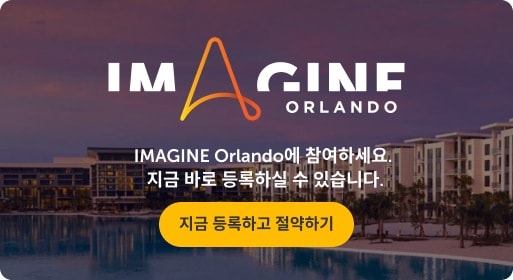- 제품
어디에서나 원하는 프로세스를 자동화하세요 에이전트 프로세스 자동화 시스템으로 복잡하고 중요한 워크플로를 간소화하세요. 플랫폼 살펴보기 플랫폼 살펴보기
- AI 시스템
- AI 에이전트 구축
AI Agent Studio를 통해 고급 작업을 자동화하세요.
- 워크플로 간소화
Automator AI를 사용하여 신속하게 설계하고 배포하세요.
- 복잡한 문서 처리
Document Automation으로 데이터를 추출하고 정리하세요.
- 기회 발견
Process Discovery로 비효율적인 업무를 식별하세요.
- 자동화 오케스트레이션
Automation Workspace로 이니셔티브를 한곳에서 관리하세요.
- AI 에이전트 구축
- 자동화 시스템
- 프로그램 관리
CoE Manager로 프레임워크를 수립하고 감독하세요.
- 어떤 앱에서든 자동화
Automation Co-Pilot을 통해 AI 기반 지원을 받아보세요.
- 시스템 통합
원활한 통합으로 애플리케이션과 워크플로를 연결하세요.
- 프로그램 관리
- 모든 제품 보기
-
- 솔루션
주요 솔루션
 Google Cloud Google Cloud와 Automation Anywhere가 기업의 신속한 AI 적용 자동화의 여정을 촉진합니다. Google Cloud
Google Cloud Google Cloud와 Automation Anywhere가 기업의 신속한 AI 적용 자동화의 여정을 촉진합니다. Google Cloud Amazon Web Services Agentic Process Automation System을 AWS와 결합하면 워크플로를 간소화하고 비용을 절감하며 자동화를 더욱 쉽게 구현할 수 있습니다. Amazon Web Services
Amazon Web Services Agentic Process Automation System을 AWS와 결합하면 워크플로를 간소화하고 비용을 절감하며 자동화를 더욱 쉽게 구현할 수 있습니다. Amazon Web Services - 리소스
Community Edition 받기자동화 기능을 완비한 클라우드 Community Edition으로 지금 자동화를 무료로 시작하세요.
주요
 2024 Gartner® Magic Quadrant™ 자동화 부문 리더로 선정. 6년 연속 업계 리더로 인정 받은 것을 자랑스럽게 생각합니다. 보고서 다운로드 보고서 다운로드
2024 Gartner® Magic Quadrant™ 자동화 부문 리더로 선정. 6년 연속 업계 리더로 인정 받은 것을 자랑스럽게 생각합니다. 보고서 다운로드 보고서 다운로드 - 고객
- 이벤트 및 웨비나
- 회사 정보

The majority of people still feel automation is too complex. In fact, a Forrester podcast on the future of work discussed the concept of the robotics quotient (RQ). It’s the measurement of how prepared an organization is to adapt to, collaborate with, and drive business results from Robotic Process Automation (RPA), artificial intelligence (AI), robotics, and related automation technologies.
RQ scores are lower than expected due to two key factors: lack of understanding on how automation is supposed to work, and lack of leadership for automation change management.
At Automation Anywhere, we understand that to truly change — and dramatically improve — the way the business world works requires a giant step forward. For that reason, we completely redesigned our automation products in an effort to create a consumer-like experience for all users at all levels, to democratize the workplace. We’re pleased to report we achieved that goal and more.
A human-centered design approach
For our Automation Anywhere Enterprise A2019 product, we implemented a new development methodology called human-centered design (HCD), which required a rigorous look at several aspects of how customers use, or would like to use, Automation Anywhere products.
HCD is an iterative, multistep process that ensures actual user needs are considered as part of the product design:
- Understand – Inform designs with direct observations and video interviews of real people in their daily working environments.
- Frame – Clarify problems and opportunities based on that research to maximize discovered customer goals.
- Prototype – Iteratively create potential solutions that are evaluated with real people’s feedback — from rough sketches to clickable mockups.

In designing Enterprise A2019, the UX team engaged more than 200 users to iterate and improve designs. Users told us how to improve, and we validated the results against a smaller sample size.
Personas — a key factor in the design process
The human-centered design methodology focuses on user personas — e.g., business users, developers, and IT managers and their unique needs. We wanted to create one platform that benefits all users. Let’s look at the RPA-based personas and their requirements.

Enterprise A2019 enables three key personas to build powerful, secure bots that improve productivity and lower costs. Persona requirements in automation systems include:
| Business user | RPA developer | IT/RPA manager |
|---|---|---|
| Automate tasks with only a few clicks using a highly intuitive, browser-based RPA that is instantly available on any device and delivers a visual interface for bot development. | Instantly enable business logic and workflows into complete, end-to-end business process automation through a powerful development environment, in seamless collaboration with business users and the help of a pluggable and extensible architecture. | Deploy RPA for users in just a few clicks, easily managing users across the enterprise, relying on the infinite scalability of the cloud, reducing ownership costs, and dramatically decreasing time to value. |
The Enterprise A2019 user interface works the way people do: visually and intuitively, and with minimal programming — unless the user wishes to engage in that. This is especially valuable for the business user who might not be as technically inclined as the RPA developer or IT manager.
Humanizing work
The human-centered design approach ties in perfectly with our make work human philosophy. And Enterprise A2019 is only the beginning. Enterprise A2019 is a fundamentally new product built on a new design paradigm. It’s the foundation of our Digital Workforce portfolio.
Our user experience team involved hundreds of customers from different geos, cultures, and levels of technical sophistication in the design process; this gave us real-world testing and feedback that resulted in major enhancements.
What type of enhancements? We transitioned the application to be web-based rather than desktop-based in order to create a familiar, seamless user interface. We also added multiple views so that business users and RPA developers can better collaborate. Additionally, we incorporated in-product learning, which assists the new user and the power user alike.
These investments have democratized the workplace and now enable virtually anyone to become a bot-creating virtuoso in minutes. Employees will be more productive and happier. Total cost of ownership will continue to decrease. And the highest levels of security will be maintained.
Human-centered design plus automation is a win-win for everyone in your organization.
Make your work
more human.
Agentic Process Automation System에 대해 알아보세요.





